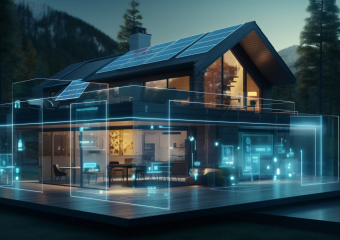New Home Sales in 2025: Insights on Buyer Behavior Trends
New home sales in 2025 are shaping up to offer valuable insights into the evolving preferences and decision-making patterns of today’s homebuyers. As the real estate market adapts to shifting economic conditions, demographic changes, and technological advancements, understanding buyer behavior through sales data is crucial for developers, realtors, and policymakers alike. This article delves into the latest trends in new home sales, unpacking what the numbers reveal about the motivations, priorities, and expectations of buyers in 2025.
Understanding the Current Landscape of New Home Sales
The housing market in 2025 continues to experience dynamic changes influenced by a combination of high mortgage rates, inflationary pressures, and a steady demand from a growing population. New home sales serve as a direct indicator of market confidence as well as consumer willingness to invest in long-term assets despite prevailing uncertainties.
Data from recent months show a selective but resilient buyer base. While overall sales volumes have faced headwinds compared to the boom years of 2020 and 2021, certain segments of the market demonstrate robust activity. For example, suburban areas and smaller metro markets are witnessing a surge in sales, reflecting a preference for more space and affordability. In contrast, urban core locations, often characterized by higher costs and limited inventory, see a modest slowdown.
Buyer Demographics Driving New Home Sales
One of the most notable shifts observed in 2025 is the changing demographic profile of new homebuyers. Millennials—now well into their prime home-buying years—constitute the largest share of purchases. Unlike previous generations, this group emphasizes sustainability, community amenities, and technology integration more strongly than square footage or traditional luxury features.
Additionally, Gen Z first-time buyers are entering the market in increasing numbers. Their behavior is marked by a strong digital orientation; they rely heavily on virtual tours, online mortgage pre-approvals, and digital negotiations. This behavior underscores how technology is transforming not just how homes are marketed and sold but also how buyers prioritize convenience and efficiency in their transactions.
What Buyer Behavior Reveals About Preferences and Priorities
Delving into the data, several clear themes emerge that reveal what buyers value most in new homes today:
1. Emphasis on Sustainability and Energy Efficiency
In 2025, more than ever, buyers are attentive to the environmental footprint of their homes. Energy-efficient appliances, solar panel installations, and sustainable building materials are becoming standard rather than optional. Many buyers are willing to invest a premium in properties that offer lower long-term utility costs and healthier living environments.
2. Flexible Living Spaces
Work-from-home arrangements remain part of many buyers’ lifestyles. As a result, flexible layouts that can accommodate home offices, gym areas, or extra bedrooms for multigenerational living are in high demand. New homes often highlight adaptable floor plans as a selling point, reflecting this behavioral shift.
3. Tech-Integrated Communities
Smart homes and communities equipped with advanced technology features are gaining traction. Buyers look for homes that can integrate with their digital lives—from voice-activated assistants and automated climate control to community-wide Wi-Fi and advanced security systems. This trend reflects the increasing desire for convenience and connectedness.
Impact of Economic Factors on Buyer Behavior
While buyer preferences shape much of the landscape, economic realities continue to exert significant influence on sales patterns. The persistently high mortgage rates have caused many potential buyers to delay or reconsider their purchases. However, data shows a subset of buyers is prioritizing affordability by focusing on newly constructed homes in emerging markets where prices remain competitive.
Additionally, incentives such as builder concessions, flexible financing options, and first-time buyer programs are proving effective in stimulating demand. These offerings reveal an acute understanding of buyer behavior, with builders tailoring strategies to overcome economic barriers and stay competitive.
What Developers and Realtors Can Learn
For developers and realtors, interpreting the data on new home sales unlocks opportunities for strategic planning. The strong preference for sustainability and technology integration signals that construction and marketing efforts should prioritize these features. Moreover, understanding that buyer behavior is increasingly digitized means that seamless, user-friendly online platforms for walkthroughs, financing, and negotiations are no longer optional but essential.
Tailoring the product offering to appeal to Millennials and Gen Z buyers—while also considering affordability and flexibility—will be key. Developers who anticipate these needs and adapt early can better capture market share and build lasting customer loyalty.
Looking Ahead: Buyer Behavior Trends for the Rest of 2025
As we progress through 2025, new home sales data will continue to reveal further nuances in buyer behavior. Watch for continued demand in affordable suburban markets, rising interest in sustainable construction, and the growing importance of technology in the home buying experience. For buyers, sellers, and industry observers alike, these trends present a roadmap for what to expect as the market navigates its next phase of evolution.
In conclusion, the data on new home sales in 2025 highlights a buyer base that is economically cautious but eager for modern, sustainable, and tech-friendly living environments. By analyzing these trends, stakeholders can better understand how buyer behavior shapes the new home market today and into the near future.







